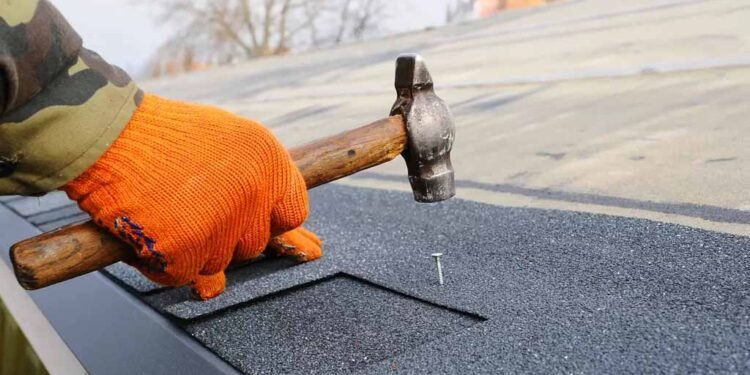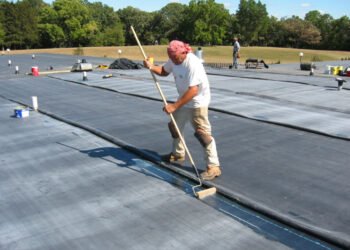As a homeowner, ensuring the safety and longevity of your property is a top priority. The structural integrity of your home forms the foundation of its stability and security. Over time, various factors such as weather, wear and tear, and even construction quality can compromise the structural soundness of a house. Identifying these signs early on can prevent further damage and costly repairs down the line. RentEasy Property Management saysthe key is to take timely action and ensure the safety of your loved ones and your investment.
Here are six signs that your home’s structural integrity has been compromised.
1. Cracks in the Walls or Foundation
One of the most apparent signs of compromised structural integrity is the presence of cracks in the walls or foundation. These cracks can vary in size, ranging from hairline fractures to larger fissures. Cracks may form due to settling, shifting soil, or even seismic activity. If left unattended, they can worsen over time, leading to more severe structural problems. To address this, consult a professional who can assess the extent of the damage and recommend appropriate repairs.
2. Sagging or Uneven Roofline
A sagging or uneven roofline is another telltale sign of potential structural compromise. This issue could result from various factors such as poor construction, water damage, or the settling of the foundation. An irregular roofline not only affects the aesthetics of your home but can also lead to water pooling, leakage, and further damage. If you’re in an area prone to high winds, the impact of strong gusts can exacerbate the problem. Promptly addressing the underlying cause and repairing any roof issues is essential to maintaining your home’s structural integrity.
3. Missing Shingles
Missing shingles on a roof can indicate that a house has been structurally compromised. When shingles go missing, it exposes the underlying structure of the roof to the elements, leaving it vulnerable to water damage, mold growth, and even structural weakening. This can lead to leaks, sagging roofs, and even collapse in extreme cases. Additionally, missing shingles can be a sign of other underlying issues, such as poor installation, aging materials, or improper maintenance. Wind damage can also be a cause of missing shingles. Therefore, it is crucial to address missing shingles promptly by seeking Austin wind damage roof repair services, for example, to prevent further damage and ensure the structural integrity of the house. Also, regular roof inspections and maintenance can help identify and fix any issues before they become major problems.
4. Doors and Windows Misalignment
Difficulty in opening or closing doors and windows is a common indicator of structural problems. If you notice the doors are sticking or windows are not aligning correctly in their frames, it could be due to the shifting of the foundation or structural members. This misalignment can also allow drafts and moisture to enter, affecting energy efficiency and potentially leading to water damage. In areas where temperature and humidity fluctuations are common, addressing this issue promptly is crucial to prevent further damage and maintain a comfortable living environment. Ensuring your home remains properly sealed against the elements can contribute to long-term structural integrity.
5. Bowed or Leaning Walls
Walls that display a noticeable bowing or leaning are a red flag for potential structural issues. These problems can arise from multiple factors, including inadequate construction, water infiltration, or an unstable foundation. The ongoing stress on the walls can gradually erode their structural strength, jeopardizing both the occupants’ safety and the overall stability of the dwelling. Engaging certified professionals for regular inspections proves crucial in detecting and addressing potential problems with wall integrity. Even though specific locations might experience distinct challenges like wind damage, it remains essential to tackle pertinent structural concerns regardless of the geographical context.
6. Deteriorating or Rotting Wood
Wooden elements in a house, such as beams, joists, and supports, are susceptible to deterioration over time, especially if exposed to moisture or pests. Rotting wood can significantly weaken the structural components, compromising the stability of the entire building. In humid regions where moisture levels are higher, the risk of wood decay is heightened. Regular inspections, timely repairs, and proper maintenance of wood elements are essential to prevent structural compromise and ensure the long-term durability of your home. Investing in quality treatments and protective coatings can significantly extend the lifespan of these crucial structural elements.
Conclusion
Upholding your home’s structural integrity stands as a fundamental obligation for every homeowner. Maintaining vigilance regarding signs of compromise, regardless of regional context, can avert the need for extensive and expensive repairs in the future. Whether you’re facing cracks in the walls, a sagging roofline, misaligned doors, and windows, bowed walls, or deteriorating wood, each indicator necessitates swift attention from qualified experts.
It’s important to recognize that, while considerations like wind damage might come into play, the crucial message is these signs are universally relevant and warrant immediate action. Regular inspections, timely remedies, and a proactive maintenance approach collectively constitute the bedrock of a secure and sturdy home.












